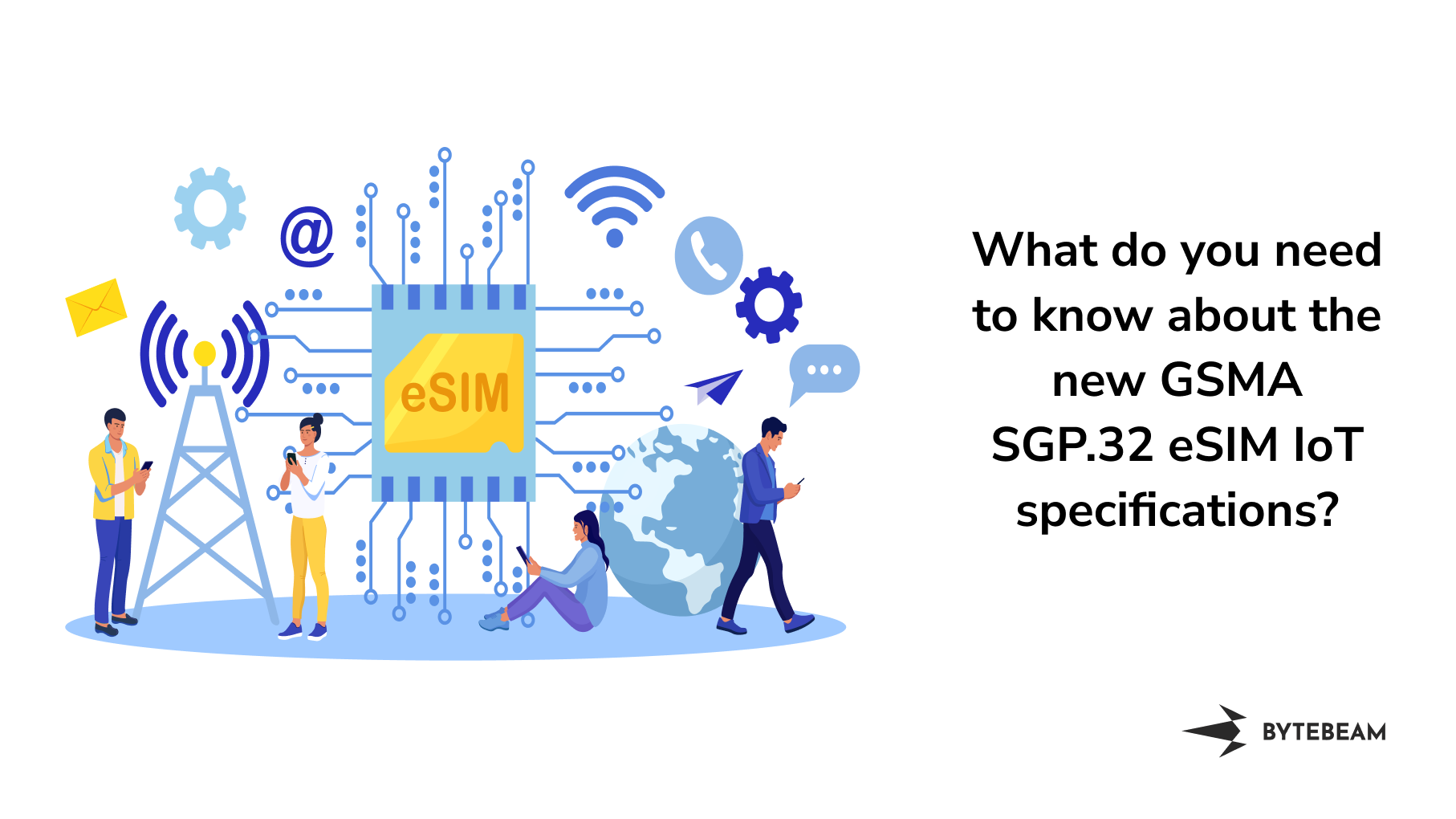What do you need to know about the new GSMA SGP.32 eSIM IoT specifications?

The Internet of Things (IoT) has grown rapidly in recent years, promising innovation and progress. However, the complexity and inflexibility of existing eSIM remote provisioning standards have limited its full potential. The newly released GSMA SGP.32 eSIM IoT Technical Specification is poised to transform the IoT landscape, making IoT deployments simpler and more scalable.
Background
eSIM technology was supposed to make IoT deployments less complex and more flexible. But the existing eSIM remote provisioning standards either made things too complicated or didn’t cater to a vast segment of devices needing connectivity. As a result, many enterprises held back from initiating large-scale IoT projects, slowing down the IoT market growth.
Existing Standards and Their Limitations
Currently, there are two main eSIM remote provisioning specifications: Machine-to-Machine (M2M) eSIM Standard and Consumer eSIM Standard.
The M2M is tailored for IoT devices that operate without a user and lack a user interface. Although it serves a purpose, the M2M ecosystem has several drawbacks, including complexity in switching profiles between operators and the need for significant upfront investment. Moreover, it leads to SM-SR lock-in situations, making it practically impossible to switch devices from one operator's SM-SR to another.
On the other hand, the Consumer eSIM standard is designed for user devices like smartphones and tablets. It simplifies profile management by requiring user consent to add or switch profiles. However, this standard isn't suitable for most IoT deployments since it requires user interaction, which isn't feasible for many IoT devices.
Clearly, there was a need for a new remote provisioning standard that could cater to the unique needs of IoT devices.
The Need for a New Standard
With the limitations of the M2M and Consumer remote provisioning standards, it became clear that a new remote provisioning standard was needed to address the unique requirements of resource-limited IoT devices, whether network-constrained or user interface-constrained.
Introducing GSMA SGP.32
GSMA SGP.32 is a new technical specification for eSIM remote provisioning standard designed specifically for network-constrained or user interface-constrained IoT devices. This standard is based on the Consumer specification but with some key differences.
In SGP.32, the Consumer spec's LPA is split into two parts: IPA and eIM. The IoT Profile Assistant (IPA) sits on the device, acting as a go-between for the eSIM and eIM. The eIM manages profile state operations on the eSIM, making remote profile enabling, disabling, and deletion possible.
Key Features of GSMA SGP.32:
- Simplified Association: Before you can manage any profiles, you've got to connect an eSIM to an eIM. This is done by sending eIM config data to the eUICC, either through the eIM itself or the backend system. It's a breeze and solves lock-in issues we've seen with M2M.
- Multivendor Connectivity: OEMs can easily switch connectivity providers or use multiple providers, handling lots of profiles and managing profile operations like a pro.
- Global Subscriptions: Businesses can shop around for services from different players and get subscriptions from operators in other countries.
Impact of GSMA SGP.32
So, what does this all mean for the IoT market? Well, many companies have been eagerly awaiting this new specification as it addresses problems that previously hindered IoT project launches. Some enterprises may stick with the M2M specification for their existing deployed devices, but most new deployments will likely adopt the new eSIM IoT remote provisioning standard.
This change will accelerate the growth of connected devices in both established and emerging markets, benefiting IoT device manufacturers and telecom ecosystem players. It will also expand service offerings, providing more options for device connectivity throughout their lifecycle.
The Promise of GSMA SGP.32
GSMA SGP.32 is set to make the IoT dream come true. By the end of 2023, we could have over 15 billion connected IoT devices globally, and that number might double by 2030. GSMA's spec could supercharge these numbers.
While GSMA SGP.32 is a game-changer, it's important to note that it's not everywhere just yet. You might find it in some regions or with specific providers, but it's poised to spread in the near future and become the standard for IoT worldwide."
Some companies are already using pre-standard solutions tied to GSMA SGP.32, but they need to make sure they work seamlessly with the new standard, are easy to implement, and have been tested in real-world settings.
GSMA SGP.32 is shaping up to redefine IoT. Whether you're a business, an IoT gadget maker, or just tech-savvy, stay tuned for the latest on GSMA SGP.32. It's going to be a game-changer!

